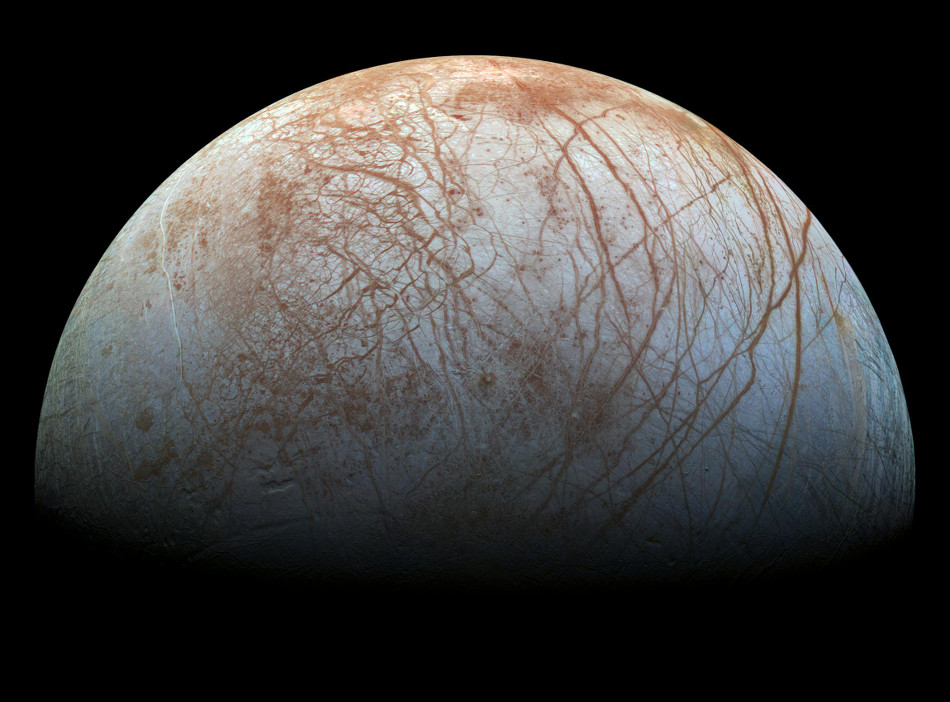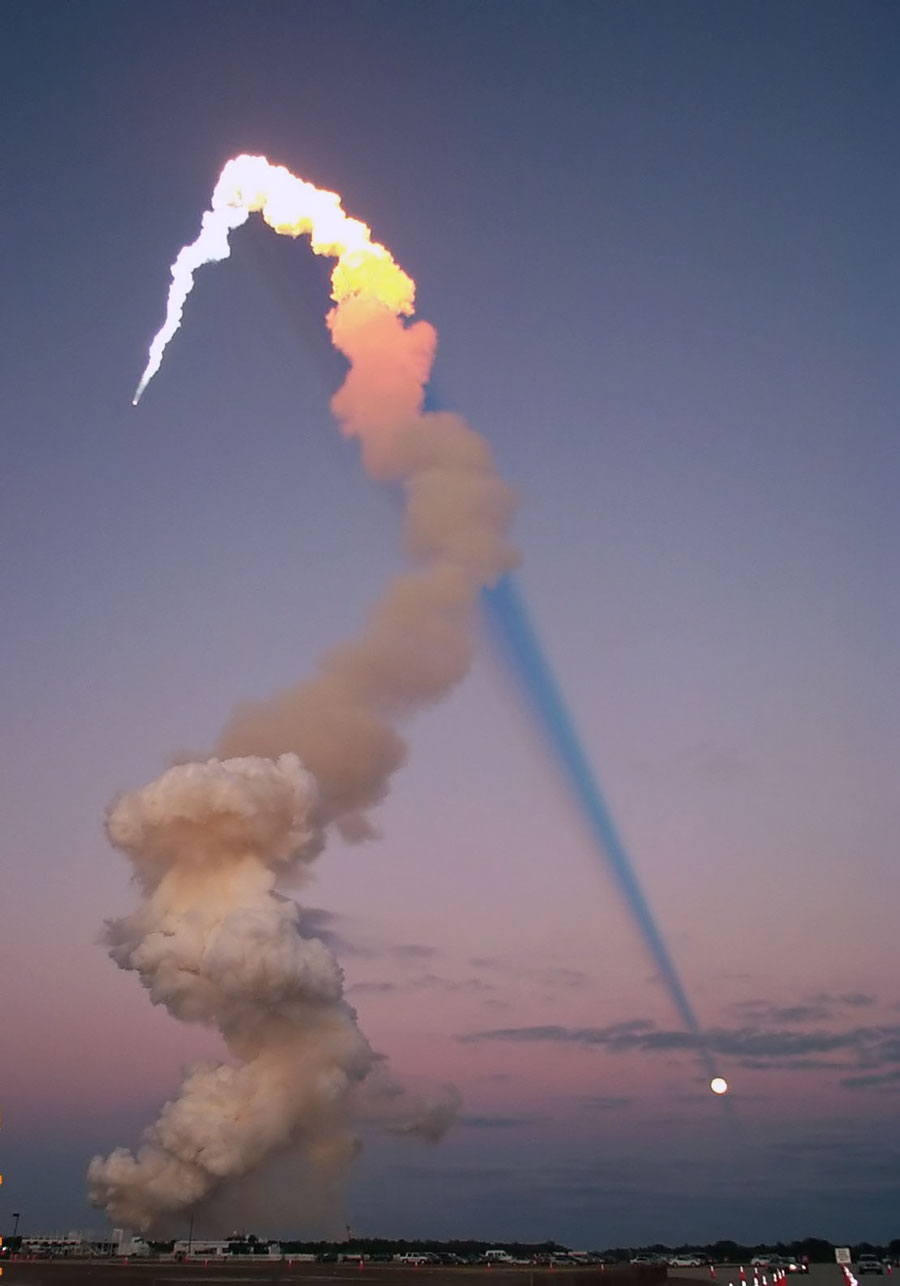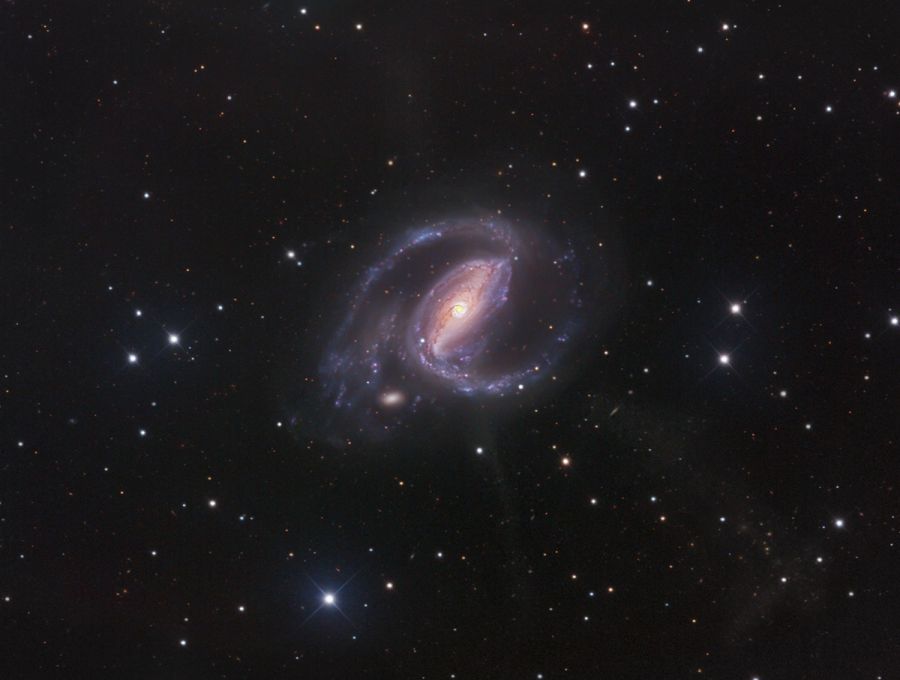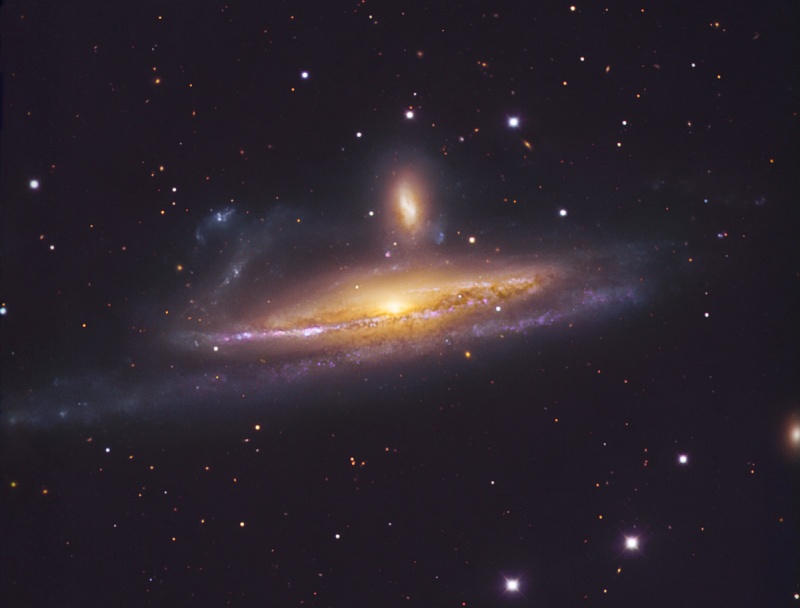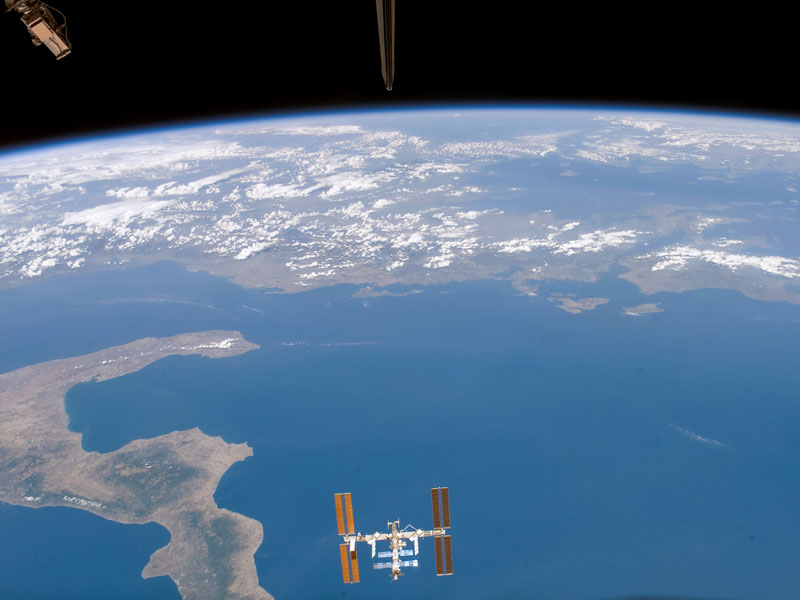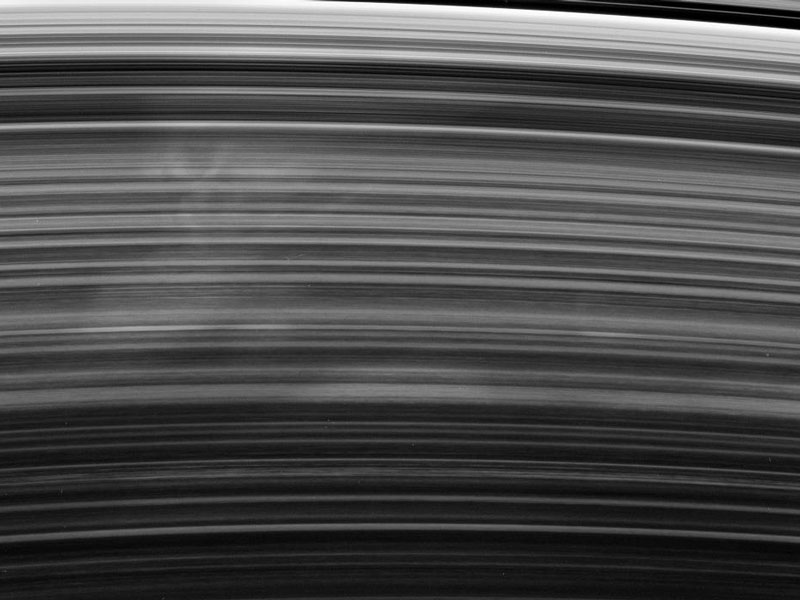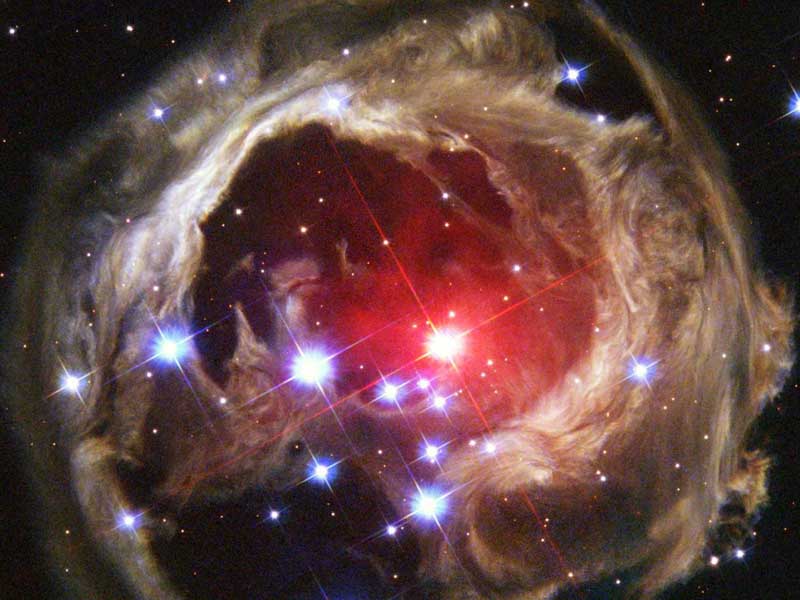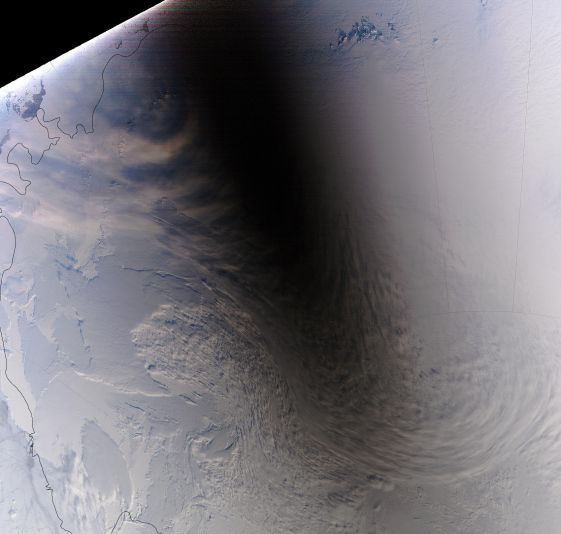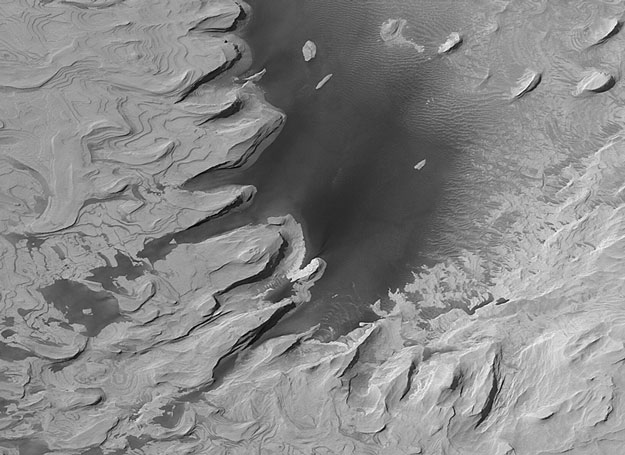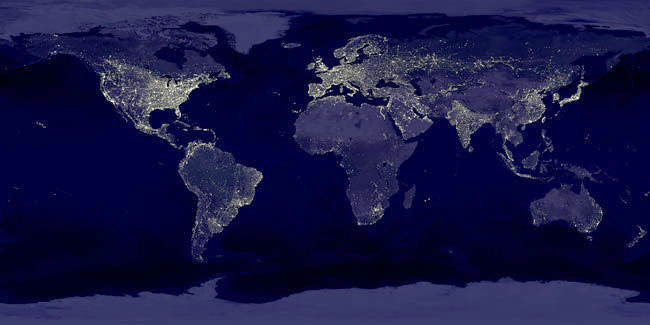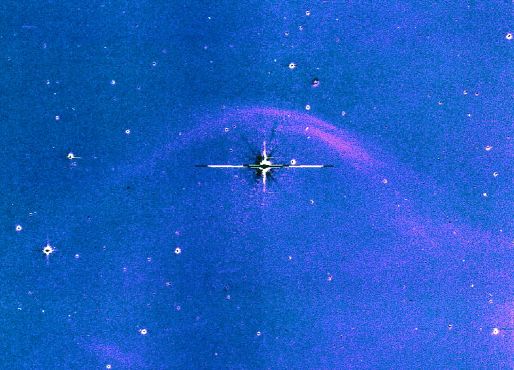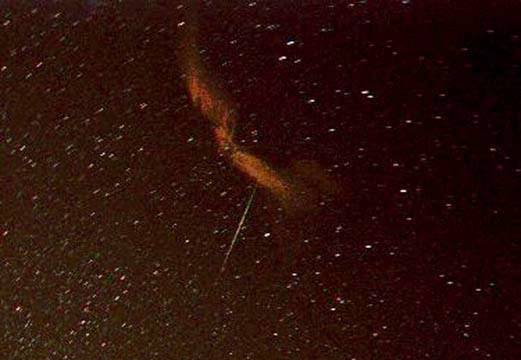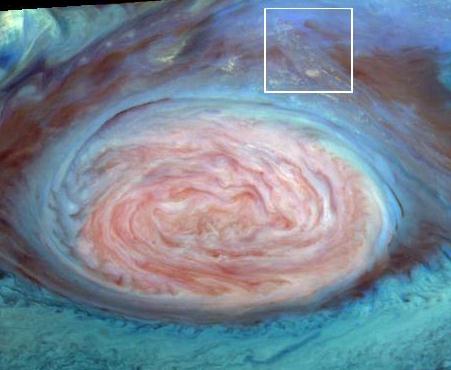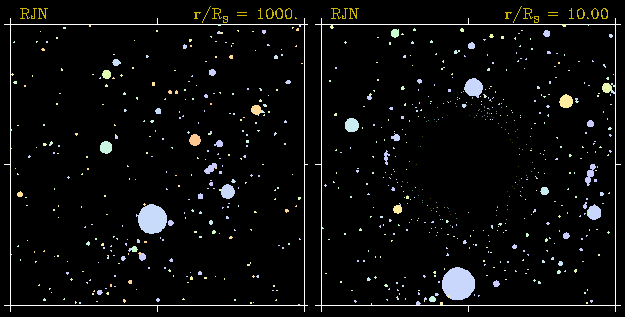| << Previous | Index | Next >> |
2014 Looping through the Jovian system in the late 1990s, the Galileo spacecraft recorded stunning views of Europa and uncovered evidence that the moon's icy surface likely hides a deep, global ocean. Galileo's Europa image data has been newly remastered here, using improved new calibrations to produce a color image approximating what the human eye might see. Europa's long curving fractures hint at the subsurface liquid water. The tidal flexing the large moon experiences in its elliptical orbit around Jupiter supplies the energy to keep the ocean liquid. But more tantalizing is the possibility that even in the absence of sunlight that process could also supply the energy to support life, making Europa one of the best places to look for life beyond Earth. What kind of life could thrive in a deep, dark, subsurface ocean? Consider planet Earth's own extreme shrimp.
2013
Click to play embedded YouTube video.
Video Credit & Copyright: Juan Carlos Casado (TWAN, Earth and Stars)
2012
[imghover6=http://apod.nasa.gov/apod/image/1211/Ju2012tezel900.jpg]http://apod.nasa.gov/apod/image/1211/Ju ... lLa900.jpg[/imghover6]Image Credit & Copyright: Tunç Tezel (TWAN)
2011 Why would the shadow of a space shuttle launch plume point toward the Moon? In early 2001 during a launch of Atlantis, the Sun, Earth, Moon, and rocket were all properly aligned for this photogenic coincidence. First, for the space shuttle's plume to cast a long shadow, the time of day must be either near sunrise or sunset. Only then will the shadow be its longest and extend all the way to the horizon. Finally, during a Full Moon, the Sun and Moon are on opposite sides of the sky. Just after sunset, for example, the Sun is slightly below the horizon, and, in the other direction, the Moon is slightly above the horizon. Therefore, as Atlantis blasted off, just after sunset, its shadow projected away from the Sun toward the opposite horizon, where the Full Moon just happened to be.
2010
[imghover6=http://apod.nasa.gov/apod/image/1011/NG ... ord900.jpg]http://apod.nasa.gov/apod/image/1011/NG ... ted900.jpg[/imghover6]Image Credit & Copyright: Ken Crawford (Rancho Del Sol Obs.)
Collaboration: David Martinez-Delgado (MPIA, IAC), et al.
Collaboration: David Martinez-Delgado (MPIA, IAC), et al.
2009 Enigmatic spiral galaxy NGC 1097 lies about 45 million light-years away in the southern constellation Fornax. The small companion galaxy, just below and left of center, that seems to be wrapped in its spiral arms, is not NGC 1097's most peculiar feature though. Instead, This very deep exposure shows hints of faint, mysterious jets, most easily seen to extend well beyond the bright arms toward the lower right. In fact, four faint jets are ultimately recognized in optical images of NGC 1097. The jets trace an X centered on the galaxy's nucleus, but could be fossil trails left over from the capture of a much smaller galaxy in the large spiral's ancient past. A Seyfert galaxy, NGC 1097's nucleus also harbors a massive black hole.
2008
2007 Last August, the Space Shuttle Endeavour crew captured this shot of the International Space Station (ISS) against the backdrop of Planet Earth. During that trip to the ISS, the space shuttle crew re-supplied the station, repaired the station, and even built more of the station. Its primary mission complete, the crew took the premier spaceship on a tour around the premier space station. Pictured during this inspection tour, the ISS is visible in front the Ionian Sea. The boot of Italy is visible on the left, while the western coastlines of Greece and Albania stretch across the top. The dorsal fin of the upside-down shuttle orbiter pokes into the very top of the image. The Space Shuttle Discovery subsequently visited the ISS in October while the next shuttle mission to the ISS is scheduled for next week.
2006 What causes the mysterious spokes in Saturn's rings? Visible on the left of the above image as ghostlike impressions, spokes were first discovered by the Voyager spacecraft that buzzed by Saturn in the early 1980s. Their existence was unexpected, and no genesis hypothesis has ever become accepted. Oddly, the spokes were conspicuously absent from initial images sent back by the robot Cassini spacecraft now orbiting Saturn. Analyses of archived Voyager images have led to the conclusions that the transient spokes, which may form and dissipate over a few hours, are composed of electrically charged sheets of small dust-sized particles. Some recent images from Cassini like that shown above have now finally shown the enigmatic spokes superposed on Saturn's B ring. Hypotheses for spoke creation include small meteors impacting the rings and electron beams from Saturnian atmospheric lightning spraying the rings. Observations of the puzzling spokes, as well as creative origin speculations, are ongoing.
2005 What caused this outburst of V838 Mon? For reasons unknown, star V838 Mon's outer surface suddenly greatly expanded with the result that it became the brightest star in the entire Milky Way Galaxy in January 2002. Then, just as suddenly, it faded. A stellar flash like this has never been seen before -- supernovas and novas expel matter out into space. Although the V838 Mon flash appears to expel material into space, what is seen in the above image from the Hubble Space Telescope is actually an outwardly moving light echo of the bright flash. In a light echo, light from the flash is reflected by successively more distant rings in the complex array of ambient interstellar dust that already surrounded the star. V838 Mon lies about 20,000 light years away toward the constellation of the unicorn (Monoceros), while the light echo above spans about six light years in diameter.
2004 This gorgeous island universe, cataloged as NGC 2683, lies a mere 16 million light-years distant in the northern constellation Lynx. A spiral galaxy comparable to our own Milky Way, NGC 2683 is seen nearly edge-on in this cosmic vista, with more distant galaxies scattered in the background. Blended light from a large population of old yellowish stars forms the remarkably bright galactic core. Starlight silhouettes the dust lanes along winding spiral arms, dotted with the telltale pink glow of ionized hydrogen gas from this galaxy's star forming regions.
2003 The long shadow of the Moon fell across the continent of Antarctica on November 23rd, during the second solar eclipse of 2003. In this view from orbit, based on data from the MODIS instrument on board the Earth observing Aqua satellite, the Moon's shadow stretches for almost 500 kilometers. Recorded between 23:15 and 23:20 Universal Time, the shadow was cast by a lunar disk silhouetted by the Sun hanging only about 15 degrees above the antarctic horizon. Observers within the central dark portion of the oval-shaped shadow could view the totally eclipsed sun. Shadows of mountains and clouds are also visible over the Norwegian named Queen Maud Land, Antarctica with the South Pole just beyond the lower right corner of the image.
2002 This lovely view from northern Spain, at Cape Creus on the easternmost point of the Iberian peninsula, looks out across the Mediteranean and up into the stream of the 2002 Leonid meteor shower. The picture is a composite of thirty separate one minute exposures taken through a fisheye lens near the Leonids' first peak, about 4:00 Universal Time on November 19. Over 70 leonid meteors are visible here, some seen nearly head on, with bright Jupiter positioned just to the right of the shower's radiant in Leo. Perched on the moonlit rocks at the bottom right, the photographers' dog seems to be watching the on going celestial display and adds a surreal visual element to the scene. What's the dog's name? Leica, of course.
2001 Is this a picture of Mars or Earth? Oddly enough, it is a picture of Mars. What may appear to some as a terrestrial coastline is in fact a formation of ancient layered rocks and wind-blown sand on Mars. The above-pictured region spans about three kilometers in Schiaparelli Crater. What created the layers of sediment is still a topic of research. Viable hypotheses include ancient epochs of deposit either from running water or wind-blown sand. Winds and sandstorms have smoothed and eroded the structures more recently. The "water" that appears near the bottom is actually dark colored sand. The image was taken with the Mars Global Surveyor spacecraft that has now returned over 100,000 images.
2000 This is what the Earth looks like at night. Can you find your favorite country or city? Surprisingly, city lights make this task quite possible. Human-made lights highlight particularly developed or populated areas of the Earth's surface, including the seaboards of Europe, the eastern United States, and Japan. Many large cities are located near rivers or oceans so that they can exchange goods cheaply by boat. Particularly dark areas include the central parts of South America, Africa, Asia, and Australia. The above image is actually a composite of hundreds of pictures made by the orbiting DMSP satellites.
1999 Runaway stars are massive stars traveling rapidly through interstellar space. Like a ship plowing through the interstellar medium, runaway star HD 77581 has produced this graceful arcing bow wave or "bow shock" - compressing the gaseous material in its path. Located near the centre of this European Southern Observatory photograph, HD 77581 itself is so bright that it saturates the sensitive camera and produces the spiky cross shape. This star is over 6,000 light-years away in the constellation Vela, and appears to move at over 50 miles per second. What force could set this star in motion? A clue to the answer may lie in its optically invisible companion star, an X-ray bright pulsar known as Vela X-1. This pulsar is clearly the remnant of a supernova explosion ... which seems to have given this massive star and its companion a mighty kick!
1998 Blazing through the sky at 70 kilometers per second, 100 kilometers or so above planet Earth, many bright Leonid meteors left behind a persistent, smoke-like trail of glowing, hot, ionized gas. Twisting in high altitude winds, these trails or trains typically were visible for many minutes. As Iowa astrophotographer Tom Bailey captured the eerie, wispy remains of this persistent train from a fireball arcing overhead, yet another fainter Leonid meteor flashed across the sky.
1997 The potato-shaped inner moons of Jupiter are lined-up in this mosaic "family portrait" of these tiny Jovian satellites. The individual images were recorded over the last year by NASA's Galileo spacecraft and are scaled to the moons' relative sizes. Left to right in increasing order of distance from Jupiter are Metis (longest dimension 37 miles), Adrastea (12 miles), Amalthea (154 miles), and Thebe (72 miles). All these moons orbit in the zone between Io and Jupiter's rings, are bombarded by high-energy ions within the Jovian magnetosphere, and are probably locked in synchronous rotation by Jupiter's strong gravity. Why are they shaped like potatoes? Like the asteroids and the diminutive moons of Mars, their own gravity is not strong enough to mold them into spheres.
1996 Storm clouds, similar to the familiar cumulonimbus thunderheads of Earth, appear to be present on Jupiter. The mosaic of images above shows the region near the raging edge of Jupiter's Great Red Spot, itself some 2 to 3 Earths wide, as observed by the Galileo spacecraft in June of this year. The false colors represent altitude. Low altitude clouds are blue, high, thick clouds are white and high, thin clouds are pink, with the box at the upper right containing the high cloud features likened to the storm clouds of Earth. Scientists speculate that these features are evidence for an abundance of water in at least some regions of Jupiter's atmosphere. On Earth, atmospheric water vapor plays an important role in driving winds - this could well be true on Jupiter, where winds reach up to 300 miles per hour.
1995 What would you see if you went right up to a black hole? Above are two computer generated pictures highlighting how strange things would look. On the left is a normal star field containing the constellation Orion. Notice the three stars of nearly equal brightness that make up Orion's Belt. On the right is the same star field but this time with a black hole superposed in the center of the frame. The black hole has such strong gravity that light is noticeably bent towards it - causing some very unusual visual distortion. In the distorted frame, every star in the normal frame has at least two bright images - one on each side of the black hole. In fact, near the black hole, you can see the whole sky - light from every direction is bent around and comes back to you. Black holes are thought to be the densest state of matter, and there is indirect evidence for their presence in stellar binary systems and the centers of globular clusters, galaxies, and quasars.
| << Previous | Index | Next >> |
